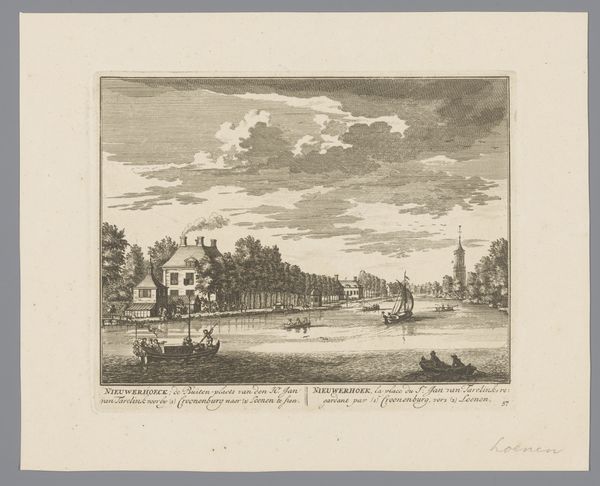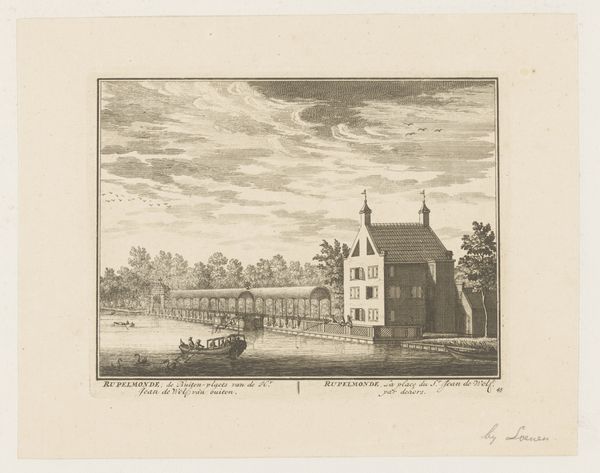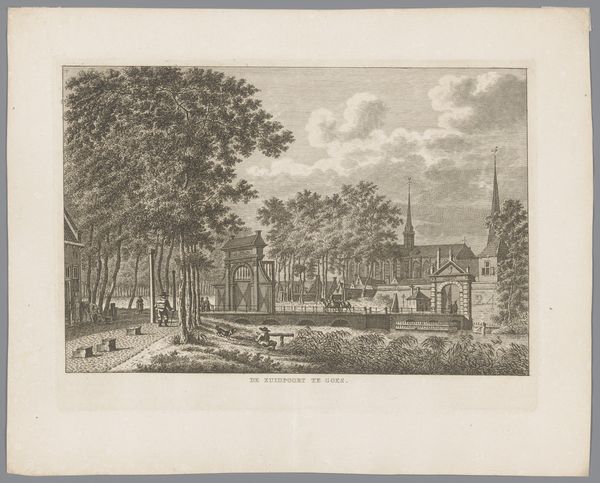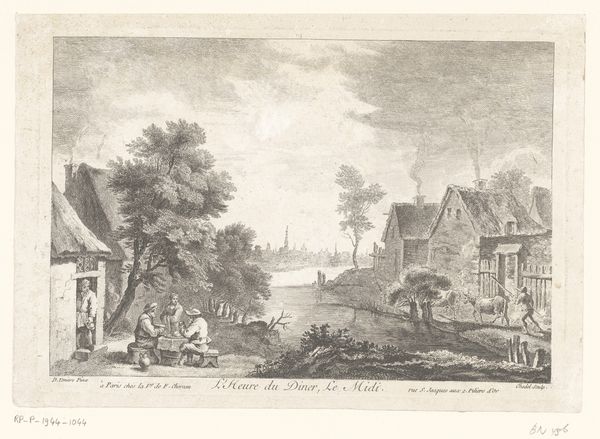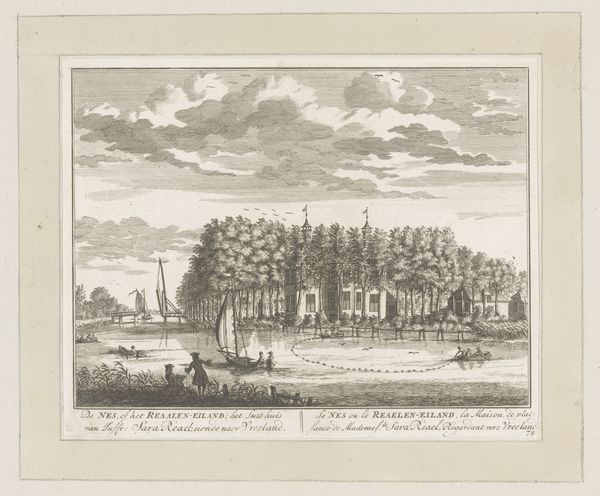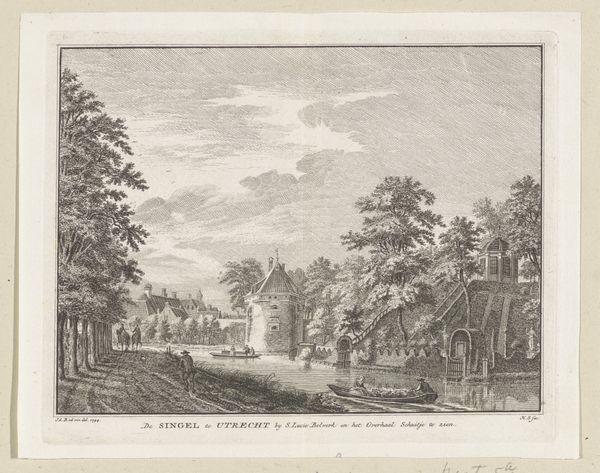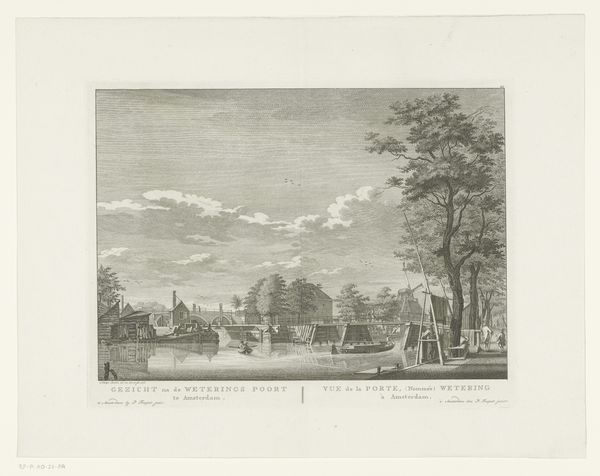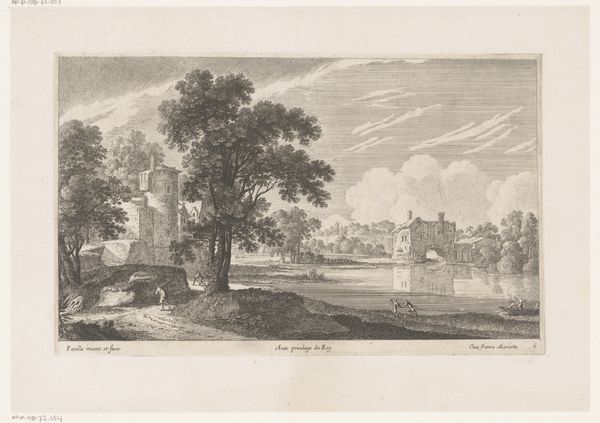
Dimensions: height 314 mm, width 404 mm
Copyright: Rijks Museum: Open Domain
Editor: Here we have Pierre François Basan's "Kanaal bij Delft," made sometime between 1733 and 1797. It’s an etching and engraving, currently held at the Rijksmuseum. I'm really drawn to how the artist captured the stillness of the water. It gives the piece a peaceful feeling. How do you interpret this work? Curator: The charm lies precisely in its masterful execution, focusing attention to the interplay between light and shadow and a structural balance between the landscape elements and their reflections. The subtle gradations achieved through the etching and engraving techniques evidence careful manipulation of the medium. Editor: Can you expand on that idea of "structural balance?" What does that entail? Curator: Observe how the composition leads your eye: from the detailed foreground with figures along the canal, past the middle-ground buildings, finally resting on the distant horizon. The horizontal lines of the canal, architecture, and clouds provide grounding to the overall vertical structure created by trees and buildings. Notice also the semiotic interplay of textures; from the hard geometry of man-made brick and rectilinear buildings juxtaposed against the natural flow of soft foliage. Editor: That’s an interesting way to approach it. I was focused more on the image itself and less on the… structural relationships. I see now what you mean, and I never would have noticed it. Curator: Indeed. By considering formal qualities like line, form, texture, and the deliberate structural arrangement of each component, we decode how its internal mechanics orchestrate aesthetic feeling, in the image. It’s an artwork built to engage the attentive eye.
Comments
No comments
Be the first to comment and join the conversation on the ultimate creative platform.
